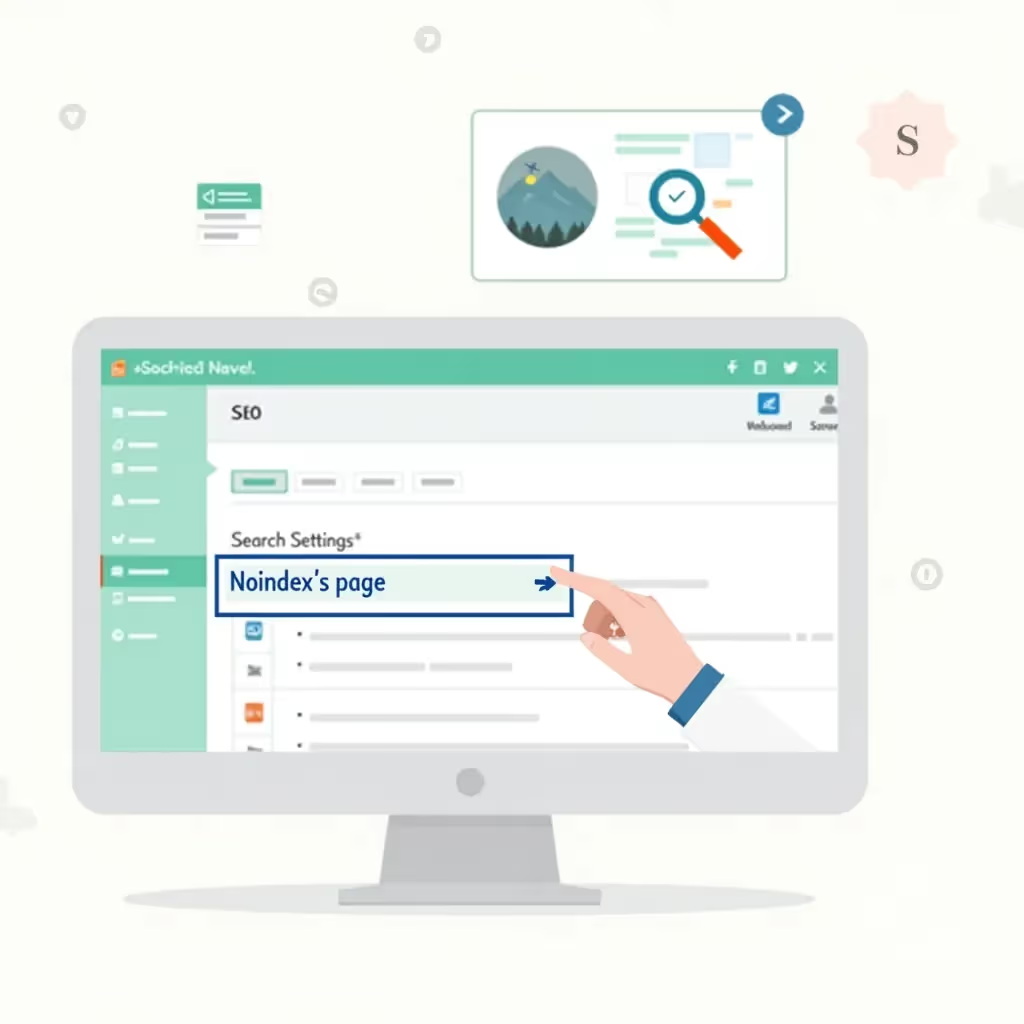Understanding Google's Ranking Algorithm
Google dominates the search engine market, processing over 8.5 billion searches a day. Achieving a higher ranking on Google can mean the difference between your website flourishing with traffic or existing in obscurity. Google's ranking system is designed to surface the most relevant and trustworthy content for users. But how does it decide which sites get that coveted page-one spot? It uses an ever-evolving, highly sophisticated algorithm that evaluates numerous factors.
While Google's exact algorithm remains a secret, plenty is known about the core factors that influence search rankings. The journey to improve your Google ranking isn't a one-step process but a multi-layered approach that requires a grasp of several SEO principles. Below are key strategies you can implement to rank higher on Google and improve the visibility of your website.
1. Quality Content is King
Content remains one of the most important ranking factors. Google's primary goal is to offer users the best answers to their queries, and it's looking for content that provides value, is well-researched, and addresses the intent of the user.
When creating content, it's essential to:
- Be Relevant: Your content should precisely address the topic your audience is interested in. Make sure to focus on the keywords that your target audience is searching for. Tools like SEMrush and Ahrefs can help you identify high-traffic keywords.
- Be Well-Written and Easy to Read: Make sure your content is professional, coherent, free from errors, and broken into digestible sections.
- Offer In-Depth Information: Google's algorithm tends to prefer content that offers more value. This often means developing long-form content that goes deep into topics. Articles with 2,000+ words tend to perform better on Google's search results.
- Optimize for RankBrain: RankBrain, Google's AI-driven algorithm, helps the engine categorize and rank content based on user engagement. The more time users spend on your page (dwell time), the better Google takes notice—so prioritize user experience and engagement factors.
Remember, content is what will attract users to your site. It’s up to you to publish material that encourages them to stick around and trust your site as an authority in its field.
2. On-Page Optimization
On-page optimization involves refining various elements within your content to make it more search-engine friendly. Here's how to do it:
- Title Tags: It’s important that your page title contains the primary keyword you're targeting. Keep it under 60 characters to ensure it displays fully in search results.
- Meta Descriptions: Even though meta descriptions don’t directly impact rankings, they influence click-through rate (CTR). Google often pulls content from the meta description (from internal pages) to display in the search results, providing a relevant snippet.
- Internal Links: Make sure you include internal linking strategies to pass "link juice." Internal links help build context and improve the topical relevance of your site.
- Use Header Tags: Structure your content with
<h1>,<h2>, and<h3>tags. Search engines use headers to understand the structure and hierarchy of information on a page. Make sure keyword-rich phrases infiltrate your headings. - Image Optimization: Include keywords in the image file names and alt text, as search engines also "see" images and rank them accordingly.
A strategic on-page SEO ensures that both search engines and users navigate through your content effortlessly.
3. Prioritize Mobile-First Indexing
Google predominantly uses the mobile version of a website for indexing and ranking because mobile traffic now surpasses desktop traffic. If your website is not mobile-friendly, your ranking could suffer. Make sure to offer a responsive site layout that adapts seamlessly on various devices.
To optimize for mobile search:
- Ensure your website uses a responsive design that adjusts to different screen sizes.
- Reduce page load speeds using tools like Google PageSpeed Insights.
- Avoid large, uncompressed images or scripts that could lead to excessive load times on mobile devices.
It’s essential to optimize for mobile since Google now follows a "mobile-first" approach to site indexing, meaning the mobile version of your site has a heavier weight in ranking considerations.
4. Use the Right Keywords
Keywords play a major role in determining where your website ranks. Using the correct terms that align with what people are searching for can boost your SEO performance significantly. But it’s not just about shoving a bunch of high-volume keywords into your content—it's about targeting keywords that best match the intent of your audience.
Here's how to better handle keyword research:
- Use Long-Tail Keywords: Long-tail keywords are specific queries that usually bring in more targeted traffic. While they may not have huge search volume, long-tail keywords have higher conversion rates.
- Target Searcher Intent: Determine what the user wants when they type a keyword into Google. Are they looking for information, ready to make a purchase, or conducting initial research?
- Avoid Keyword Stuffing: Google penalizes websites that insert keywords excessively. Aim for keyword density of 1-2% and always prioritize quality over quantity.
Tools such as Google's Keyword Planner, and WordStream can help identify the most relevant keywords for your niche or audience.
5. Build High-Quality Backlinks
A website's link profile is one of the most important Google ranking factors. Backlinks, or inbound links from other websites to yours, serve as signals of trust and authority. When high-authority sites link to your content, it tells Google that your site is trustworthy and provides value.
However, not all backlinks are created equal. Google not only looks at the quantity of backlinks but the quality as well. A backlink from CNN or BBC will have more impact than tens or hundreds from low-authority sites.
To build high-quality backlinks:
- Create Shareworthy Content: Content that’s informative, original, and interesting is more likely to get linked by others.
- Guest Blogging: Write guest posts for other reputable blogs in your niche. These posts often include backlinks to your own website.
- Build Relationships: Network with other influencers and bloggers within your industry. Connecting with others in your field can often result in organic backlinks.
Strive for natural, organic backlinks because Google punishes websites that engage in manipulative linking practices. Quality over quantity remains the rule of thumb.
6. Improve Website Speed
Google considers website speed an official search ranking signal. Users today expect sites to load fast and will abandon websites that lag behind. Ideally, your web pages should load within 2.5 seconds or faster to avoid driving users away.
Table: Impact of Page Load Time on Bounce Rate
| Page Load Time (seconds) | Bounce Rate Increase |
|---|---|
| 0-2 seconds | 9% |
| 3 seconds | 32% |
| 5 seconds | 90% |
| 6+ seconds | 123% |
To optimize your site speed:
- Compress images and files to reduce their size.
- Use a Content Delivery Network (CDN) to help improve site speed for global visitors.
- Minimize the use of large scripts, plugins, and widgets that slow load times.
- Enable browser caching so that returning users can access your site faster.
Run regular performance audits using tools like Google PageSpeed Insights or GTmetrix to identify areas of improvement.
7. Enhance User Engagement and Experience
Google’s algorithm is designed to reward websites that provide a positive user experience. The better your site engages users and meets their expectations, the better your chances of ranking high on search engine results pages (SERPs).
This includes:
- Reducing Bounce Rate: Bounce rate refers to the percentage of visitors who navigate away after viewing only one page. Keep visitors on your site by providing multiple calls to action, internal links, and related content suggestions.
- Improving Site Structure: Your site's navigation should be intuitive. Use simple, clear menus and a logical category structure to make the browsing experience seamless.
- Suggesting Related Content: Offering readers more relevant articles or resources keeps them engaged with your entire website.
- Analyzing User Behavior: Tools like Google Analytics and Hotjar provide significant insights into how users interact with your website, helping you make necessary improvements.
By focusing on user engagement and experience, you're not only improving your SEO, but you’re also creating value for visitors, which can directly contribute to more time spent on your site and higher conversions.
Conclusion
There's no magic formula to ranking high on Google, but by following the steps above, you can put your website in a strong position for SEO success. Focus on content quality, improve your on-page optimizations, target relevant keywords, and always prioritize the user experience.





